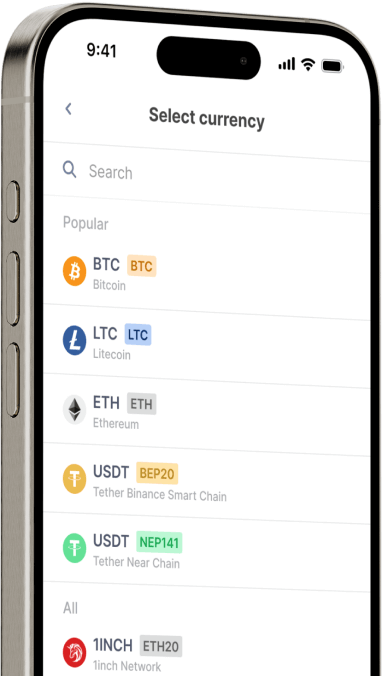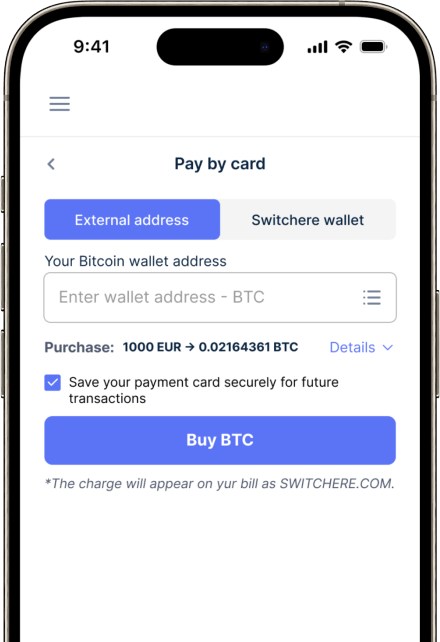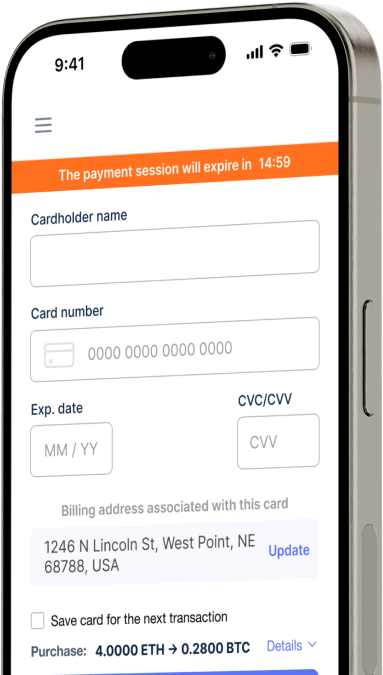Convertire
Japanese yen (JPY) in Chromia (CHR) istantaneamente
Acquistate facilmente Chromia (CHR) con Japanese yen (JPY) su Switchere e beneficiate di transazioni rapide e sicure.
Circa
Chromia (CHR)
Chromia (CHR) è una piattaforma blockchain relazionale progettata per abilitare una nuova generazione di applicazioni decentralizzate (dApp) affrontando le sfide di scalabilità, gestione dei dati ed esperienza degli sviluppatori prevalenti nelle precedenti infrastrutture blockchain. A differenza delle tradizionali piattaforme di smart contract che utilizzano una macchina virtuale, Chromia integra la sicurezza di una blockchain con la flessibilità e l'efficienza di un database relazionale. Questa architettura unica, basata sul framework Postchain, consente di gestire strutture di dati e query più complesse direttamente on-chain, rendendola un'infrastruttura Web3 altamente adatta per applicazioni ad alta intensità di dati come sistemi aziendali, social media e giochi avanzati.
Il cuore dell'innovazione di Chromia risiede nel suo linguaggio di programmazione personalizzato, Rell, progettato per essere altamente sicuro e facile da imparare per gli sviluppatori che hanno familiarità con SQL. Questa attenzione a un ambiente favorevole agli sviluppatori mira ad accelerare la creazione di dApp sofisticate. La rete opera su un meccanismo di consenso Byzantine Fault Tolerance (BFT), con le dApp che vengono eseguite sulle proprie sidechain dedicate, garantendo un throughput elevato e una bassa latenza. Il token di utilità nativo, CHR, è centrale nella tokenomics dell'ecosistema. Viene utilizzato dalle dApp per pagare le tariffe di hosting, messo in staking dai provider di nodi per garantire la sicurezza e funge da valuta standard all'interno dell'economia degli asset digitali di Chromia.
Acquistare altre 150+ criptovalute per Japanese yen (JPY)
Altre monete per Japanese yen (JPY)
-
JPY per ZRX
-
JPY per 1INCH
-
JPY per AAVE
-
JPY per ACH
-
JPY per ALGO
-
JPY per TLM
-
JPY per ANKR
-
JPY per APE
-
JPY per NFT
-
JPY per API3
-
JPY per APT
-
JPY per ARPA
-
JPY per AUDIO
-
JPY per AVAX
-
JPY per AVAX
-
JPY per AXS
-
JPY per BADGER
-
JPY per BAL
-
JPY per BNT
-
JPY per BAT
-
JPY per BNB
-
JPY per BSW
-
JPY per BSV
-
JPY per BLUR
-
JPY per BONE
-
JPY per CTSI
-
JPY per CELR
-
JPY per CELO
-
JPY per CEL
-
JPY per LINK
-
JPY per CHZ
-
JPY per CHR
-
JPY per C98
-
JPY per COMP
-
JPY per CFX
-
JPY per PEOPLE
-
JPY per CVX
-
JPY per ATOM
-
JPY per CTC
-
JPY per CRV
-
JPY per DAI
-
JPY per DASH
-
JPY per MANA
-
JPY per DENT
-
JPY per DGB
-
JPY per DYDX
-
JPY per XEC
-
JPY per EOS
-
JPY per ETC
-
JPY per ENS
-
JPY per ETHW
-
JPY per FET
-
JPY per FIL
-
JPY per FLOKI
-
JPY per GALA
-
JPY per GNO
-
JPY per ONE
-
JPY per HBAR
-
JPY per HOT
-
JPY per HOOK
-
JPY per ICX
-
JPY per ILV
-
JPY per IMX
-
JPY per INJ
-
JPY per ICP
-
JPY per IOST
-
JPY per IOTX
-
JPY per JASMY
-
JPY per JST
-
JPY per KAVA
-
JPY per KCS
-
JPY per KSM
-
JPY per KNC
-
JPY per LDO
-
JPY per LQTY
-
JPY per LPT
-
JPY per LOOKS
-
JPY per LRC
-
JPY per LUNA
-
JPY per MKR
-
JPY per MASK
-
JPY per EGLD
-
JPY per ALICE
-
JPY per NEAR
-
JPY per XEM
-
JPY per NEXO
-
JPY per NOT
-
JPY per NMR
-
JPY per OKB
-
JPY per OMG
-
JPY per ONT
-
JPY per EDU
-
JPY per OP
-
JPY per OGN
-
JPY per CAKE
-
JPY per PAXG
-
JPY per PENDLE
-
JPY per DOT
-
JPY per POL
-
JPY per QTUM
-
JPY per QNT
-
JPY per RDNT
-
JPY per XRD
-
JPY per RVN
-
JPY per REN
-
JPY per RSR
-
JPY per RLC
-
JPY per RPL
-
JPY per SFP
-
JPY per SHIB
-
JPY per SKL
-
JPY per SXP
-
JPY per STND
-
JPY per STG
-
JPY per XLM
-
JPY per GMT
-
JPY per STORJ
-
JPY per STMX
-
JPY per SUSHI
-
JPY per SNX
-
JPY per USDT (Polygon)
-
JPY per USDT (AVAC)
-
JPY per USDT (BEP20)
-
JPY per USDT (ERC20)
-
JPY per USDT (SPL)
-
JPY per USDT (NEP141)
-
JPY per USDT (FA2)
-
JPY per USDT (TRC20)
-
JPY per USDT (JETTON)
-
JPY per XTZ
-
JPY per GRT
-
JPY per SAND
-
JPY per TFUEL
-
JPY per THETA
-
JPY per RUNE
-
JPY per TON
-
JPY per TUSD (BEP20)
-
JPY per TUSD (TRC20)
-
JPY per TWT
-
JPY per UOS
-
JPY per UMA
-
JPY per UNI
-
JPY per USDC (Polygon)
-
JPY per USDC (SPL)
-
JPY per USDC (OP)
-
JPY per USDC (BEP20)
-
JPY per USDC (AVAC)
-
JPY per USDC (ARB)
-
JPY per USDC (ERC20)
-
JPY per VET
-
JPY per VRA
-
JPY per WAXP
-
JPY per WOO
-
JPY per WLD
-
JPY per WBTC
-
JPY per WMINIMA
-
JPY per XDC
-
JPY per YFI
-
JPY per YGG
-
JPY per ZIL
Come acquistare gli Chromia (CHR)
Domande frequenti
-
Qual è il metodo principale per acquistare Chromia (CHR) con Yen giapponese (JPY)?
Il metodo più comune è utilizzare un exchange di criptovalute regolamentato in Giappone che elenca la coppia di trading JPY/CHR. Ciò comporta la creazione di un account, il completamento del processo di verifica KYC/AML obbligatorio richiesto dalla FSA, e quindi il finanziamento del proprio account con JPY tramite un bonifico bancario nazionale. Una volta finanziato, è possibile inserire un ordine nel book degli ordini JPY/CHR per acquisire questo asset digitale per l'hosting di dApp.
-
Quali sono le commissioni comuni associate a una transazione da JPY a CHR?
Quando si convertono JPY in CHR, si incontrano tipicamente diverse commissioni. In primo luogo, una commissione di deposito per finanziare il proprio conto sull'exchange con Yen giapponesi tramite bonifico bancario. In secondo luogo, una commissione di trading (commissione maker o taker) sull'exchange quando si esegue l'operazione JPY/CHR. Infine, se si spostano i propri token CHR su un portafoglio digitale non-custodial, si pagherà una commissione di prelievo dalla rete, che è standard per la maggior parte delle transazioni blockchain che coinvolgono token ERC-20 come Chromia.
-
Una volta acquistati CHR con JPY, quali sono le mie opzioni per l'utilizzo del token all'interno dell'ecosistema Chromia?
Oltre a detenere semplicemente l'asset digitale, i tuoi token CHR hanno un'utilità diretta. L'uso principale è per lo staking dei provider, dove deleghi i tuoi token ai provider di rete che gestiscono i nodi che ospitano le dApp, contribuendo a proteggere la rete. CHR viene anche utilizzato come valuta per pagare le commissioni di hosting delle dApp e come mezzo di scambio all'interno di alcune applicazioni basate su Chromia, specialmente nel settore dei giochi su blockchain. Questa utilità integrata è fondamentale per la tokenomics della rete.
-
Cos'è la 'Blockchain Relazionale' e perché è rilevante quando si scambia la coppia JPY/CHR?
L'architettura 'Blockchain Relazionale' di Chromia combina la sicurezza di una blockchain con l'efficienza di un database relazionale. Questo design, che utilizza il linguaggio di programmazione Rell, consente dApp complesse, specialmente nel gaming su blockchain e nelle soluzioni aziendali. Per un trader JPY/CHR, comprendere questa tecnologia di base è fondamentale, poiché si sta investendo nella capacità tecnica unica di una piattaforma di ospitare applicazioni scalabili e ad alta intensità di dati, il che guida il valore fondamentale del token CHR.
-
In che modo il framework Postchain di Chromia offre scalabilità e perché è importante per il mio asset CHR?
Postchain è il framework blockchain privato di Chromia che consente a ogni dApp di avere le proprie sidechain dedicate, ancorate a una blockchain principale per la sicurezza. Questa architettura previene la congestione della rete e consente un elevato throughput delle transazioni. Per un detentore di CHR acquistato con JPY, questa scalabilità è cruciale in quanto sostiene la capacità della piattaforma di attrarre dApp ad alta richiesta, aumentando così l'utilità e la potenziale domanda per il token CHR, utilizzato per le commissioni di hosting e lo staking.
-
Come posso conservare in modo sicuro i miei token CHR dopo averli acquistati su un exchange di criptovalute basato su JPY?
Per la massima sicurezza, si consiglia di prelevare i propri token CHR dall'exchange su un portafoglio digitale non-custodial dove si controllano le chiavi private. Poiché CHR è un token ERC-20, è compatibile con una vasta gamma di portafogli basati su Ethereum, inclusi portafogli hardware (come Ledger o Trezor) per la conservazione a freddo o portafogli software affidabili (come MetaMask o Trust Wallet) per un accesso più frequente. Controllare sempre due volte l'indirizzo di prelievo ed eseguire prima una piccola transazione di prova.




